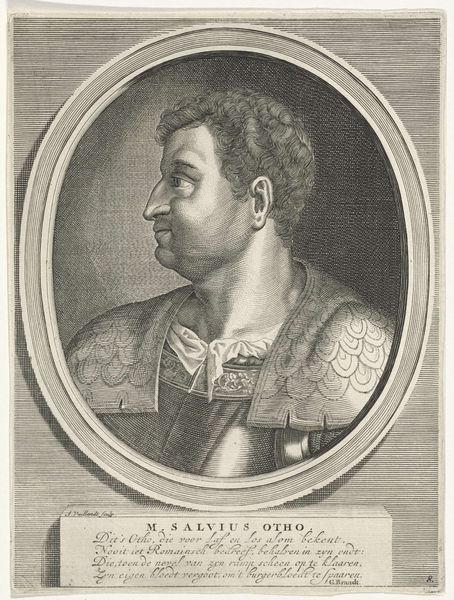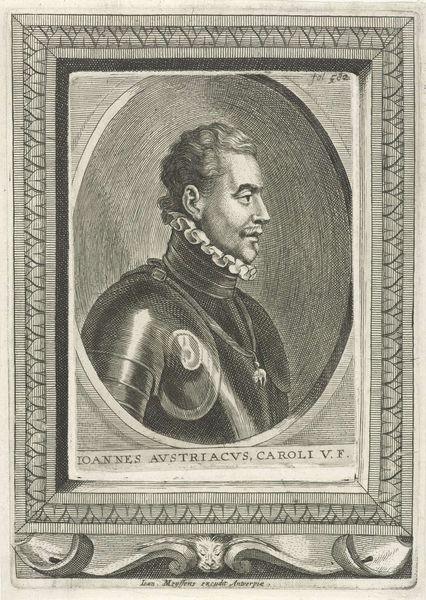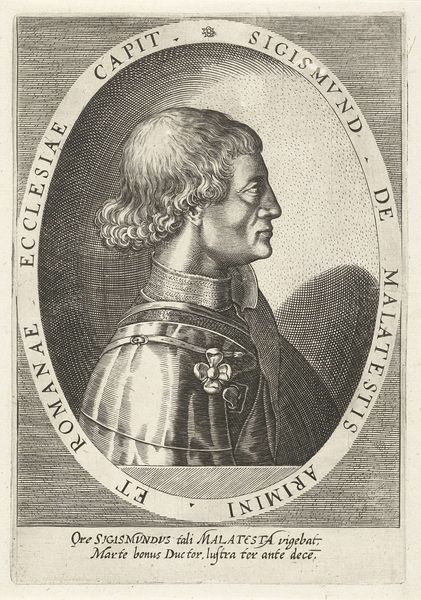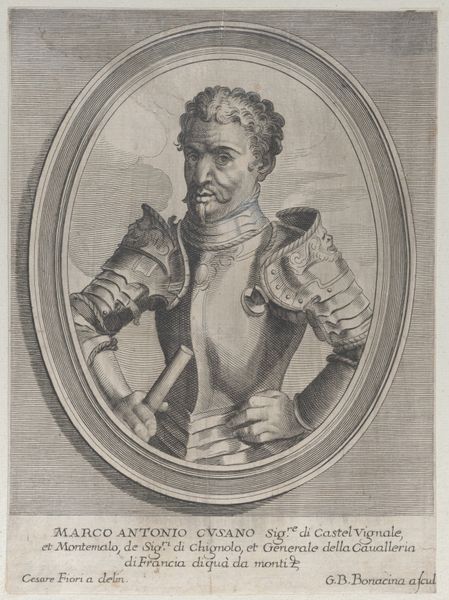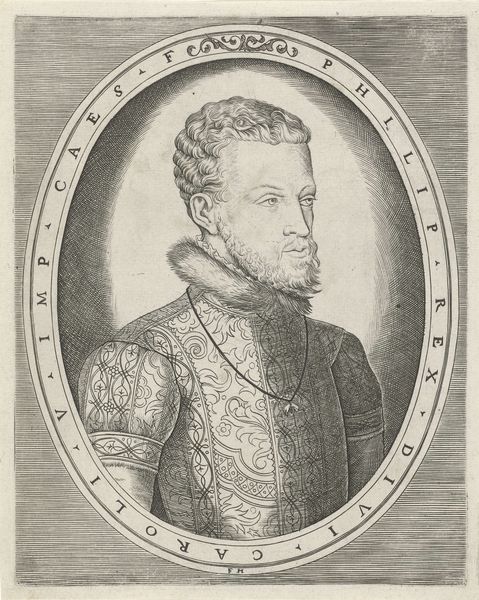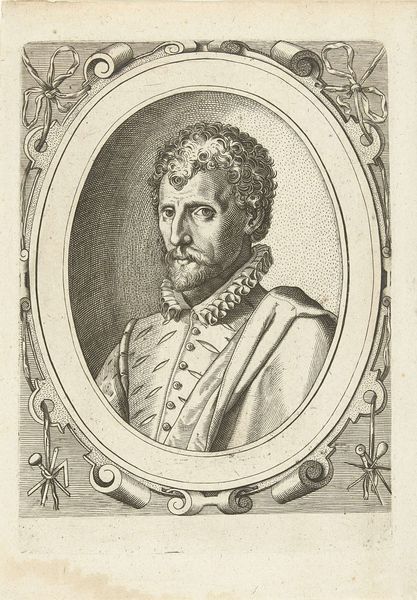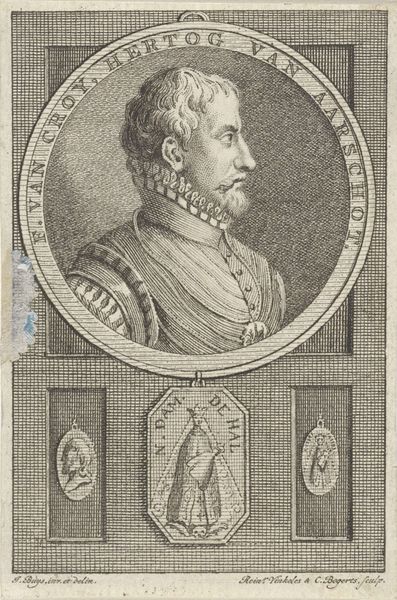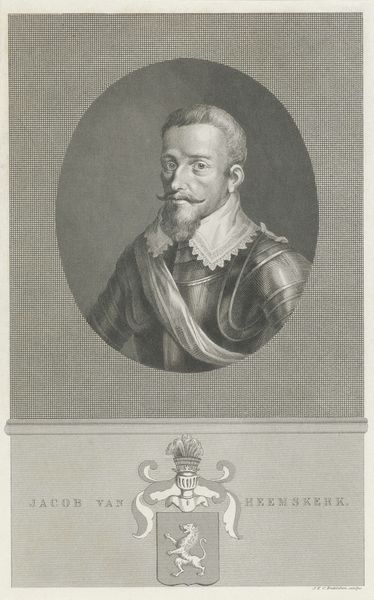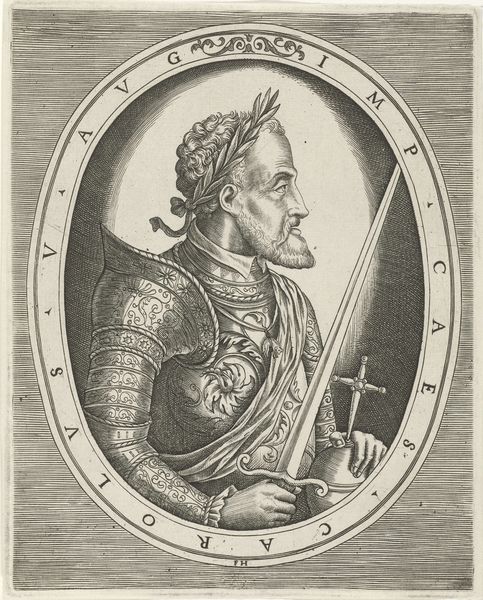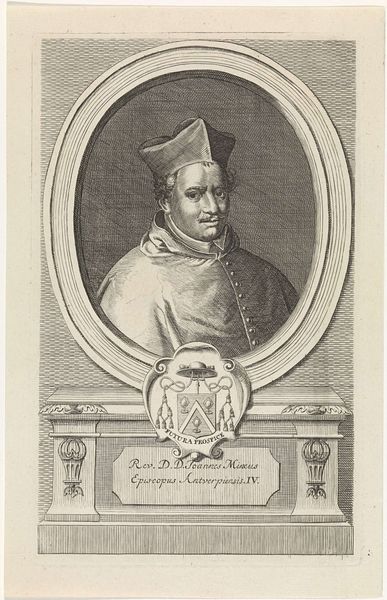
engraving
#
portrait
#
baroque
#
figuration
#
form
#
ancient-mediterranean
#
line
#
history-painting
#
academic-art
#
engraving
Dimensions: height 218 mm, width 160 mm
Copyright: Rijks Museum: Open Domain
Andries Vaillant created this portrait of Caligula, Emperor of the Roman Empire, in the Netherlands sometime around 1680. This engraving presents Caligula in the guise of a classical hero, referencing the visual codes of Roman authority. The choice to depict Caligula, a figure synonymous with tyranny and excess, during the Dutch Golden Age, is striking. The Dutch Republic, having recently won independence from Spanish rule, was deeply invested in ideas of liberty and good governance. Was Vaillant, or his patron, using Caligula as a warning against the dangers of autocratic rule? Engravings such as this one circulated widely, shaping public perceptions of historical figures. By studying the printmaking industry and the distribution networks of the time, we can gain a deeper understanding of the role of images in shaping political discourse. The meaning of this artwork is contingent on its historical and social context, revealing the complex interplay between art, power, and public opinion.
Comments
No comments
Be the first to comment and join the conversation on the ultimate creative platform.
